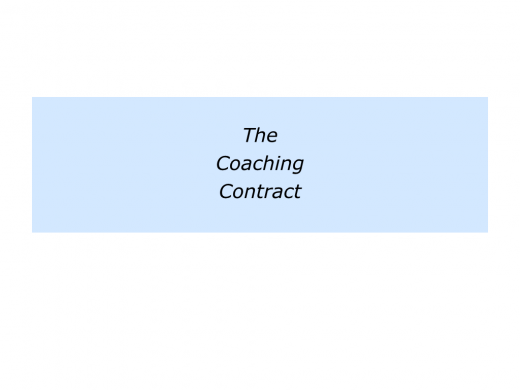
Imagine that somebody has asked you to be their coach. Before embarking on the coaching process it is vital to establish their goals.
Clear contracting is vital in any relationship. This is especially so between the coach and the coachee.
Setting specific targets also increases the likelihood of success. So here are some suggestions for clarifying the coaching contract
Whilst the following process sounds very structured, you can do it in your own way. It will provide the basis for building a successful coaching relationship.
You can invite the person to
fill-in the coaching contract
You may start by having an informal conversation with the person. This may be face-to-face, on the phone or even by email.
In my own work, for example, I do a lot of coaching via Zoom. Before our first meeting I explain what I can help with and, sometimes just as importantly, what I can’t. Some of my work is with performing artists, so then I explain.
The topics I can help with include:
How to clarify your picture of success;
How to build on your strengths and manage the consequences of any weaknesses;
How to pursue practical strategies for achieving your goals;
How to find solutions to particular challenges you face in your personal or professional lifeV
How to continue to do your best to achieve your picture of success.
It is important to explain that I can’t help them with technical things, such as how to be a better singer. What I can help with, however, are things like how to manage their emotions and be calm during performances.
Many people have dreams, but it is vital to discover if they have the desire and discipline required to deliver. Bearing this in mind, some coaches borrow a tool that is often used in sports. This invites a person to complete the coaching contract.
The coachee is asked to describe:
The specific goals they want to achieve;
The specific pluses and potential minuses involved in working towards and achieving the goals;
The specific things they see as their responsibilities in working towards achieving the goals;
The specific kinds of help they want from the coach in working towards achieving the goals;
The specific things they can do to take steps towards achieving their goals.
The person is asked to send the contract to the coach ahead of the next meeting. The coach can then gauge the person’s attitude and aspirations by the amount of work they put into creating the contract.
You can, if appropriate, adapt this approach in your own way. I used to use elements of it, for example, when working with young people. Here is the framework that is to be filled-in by the coachee.
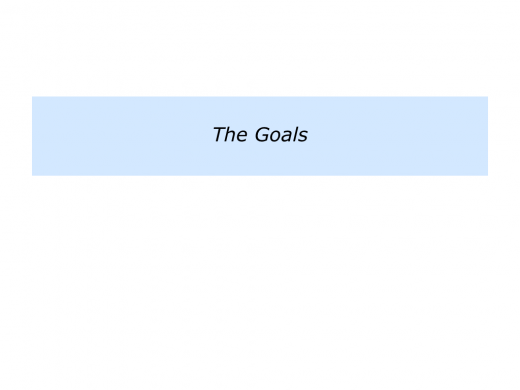
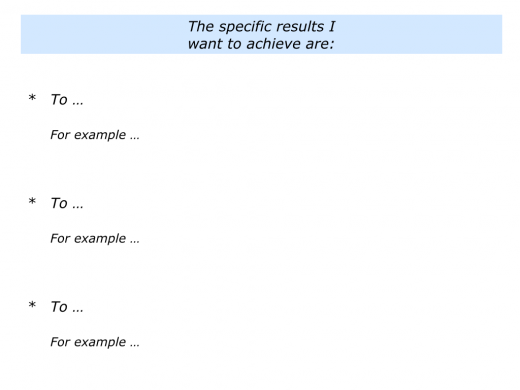
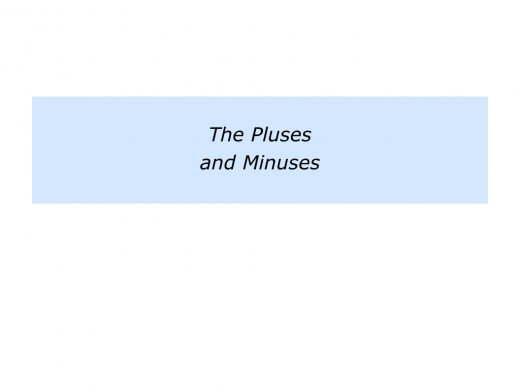
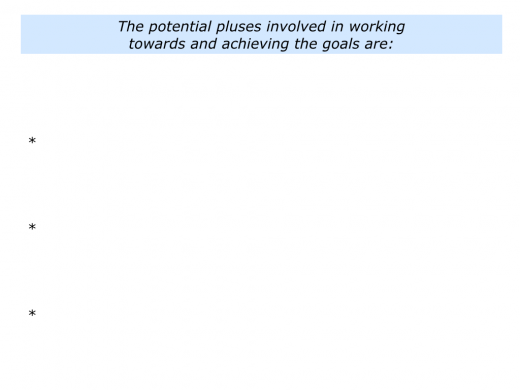
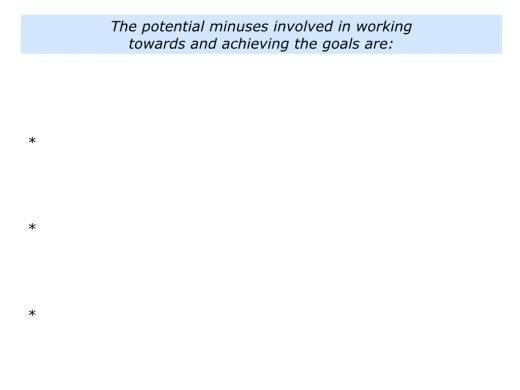
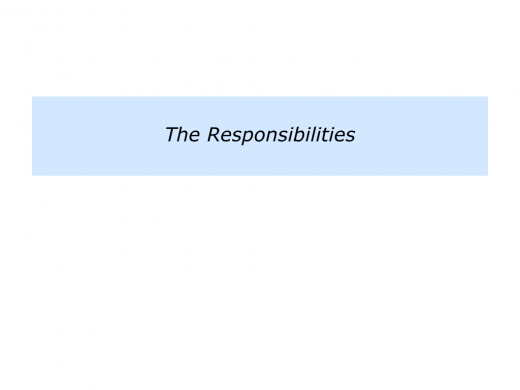
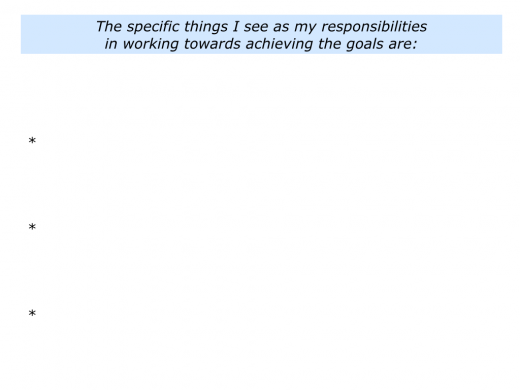
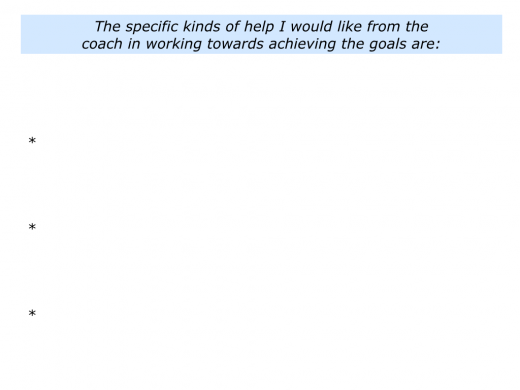
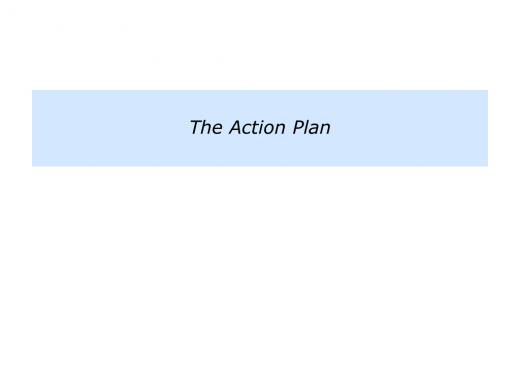
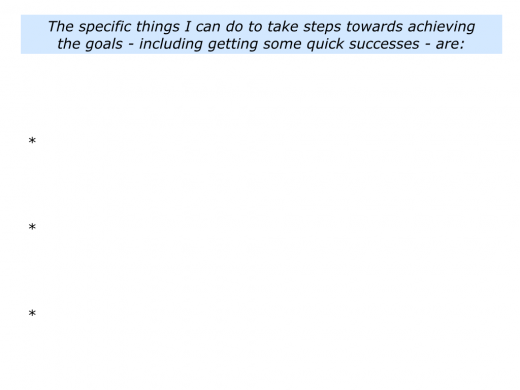
You can meet with the person
to explore the coaching contract
Set aside at time to discuss the contract in depth. You might say something like the following.
Thank you for filling in the coaching contract. I am sure that we are both prepared to work hard to achieve the goals.
Before finalising the agreement, however, it would be good to explore the themes in some depth.
We may well end up confirming what you have already written. But it would be good to go through the document together. So let’s make a start.
Looking at each goal in turn, let talk more about:
The real results you want to achieve;
The reasons you have for setting the goal and the benefits of achieving it;
The motivation you have – on a scale 0-10 – for doing the work involved in achieving the goal.
The key is to be very honest, rather than giving the right answer. We can then focus on how you can achieve these stimulating goals.
Encourage the person to talk honestly. You can then have a similar conversation regarding the mutual responsibilities and the specific measures.
Let’s imagine that you are happy with the person’s attitude and their ability to reach the goals. It is then time to move onto the next stage.
You can finalise the coaching contract and,
if appropriate, embark on the actual coaching
Create a short time-out to enable the person to reflect and make any alterations to the contract. Make sure you are both agreed on the specific goals, the mutual responsibilities and the measures.
If appropriate, you may then both want to launch into the actual coaching. If so, invite the person to choose the first topic they want to tackle.
There are many approaches to coaching. If you are working in sports, theatre, dance or other physical activities, you may aim:
To clarify the specific goal the person wants to achieve;
To watch them in action and focus on;
a) The specific things they are doing well and how they can follow these principles more in the future;
b) The specific things they can do better in the future and how;
To then offer practical tools they can use to achieve their picture of success.
What if you do not have the luxury of watching a person in action? You may, for example, meet a person in a series of one-to-one sessions away from their work place.
Different coaches use different models for helping people to achieve their goals. Whichever model you use, however, it can be useful to start by making clear contracts about the specific goals the coachee wants to achieve. This helps to improve the chances of success.
If you wish, try tackling the exercise on this theme. This invites you to do the following things.
Describe the specific things you can do to make a clear coaching contract with the coachee.
Describe the benefits of making such a coaching contract.
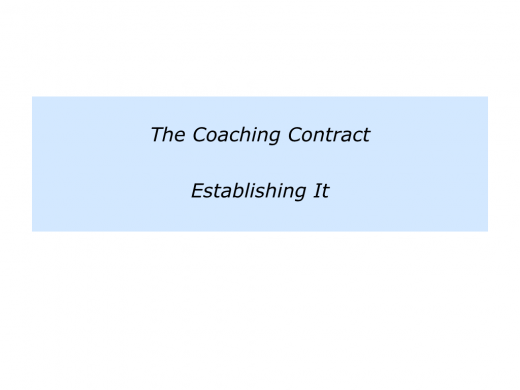
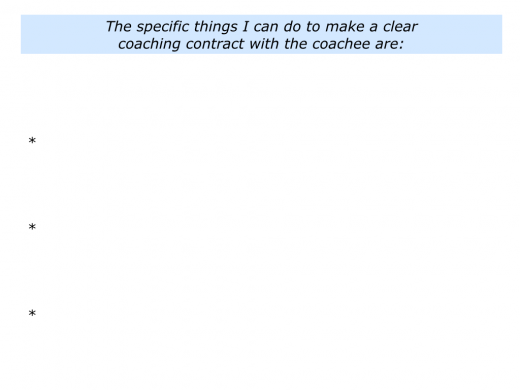
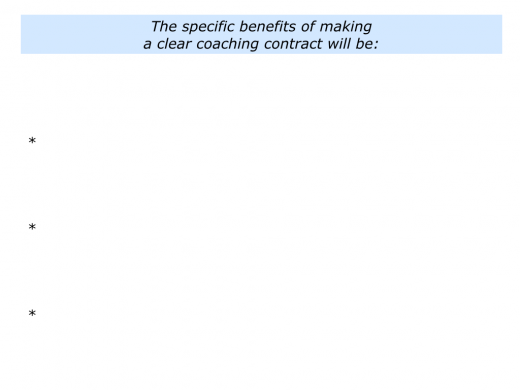


Leave a Reply